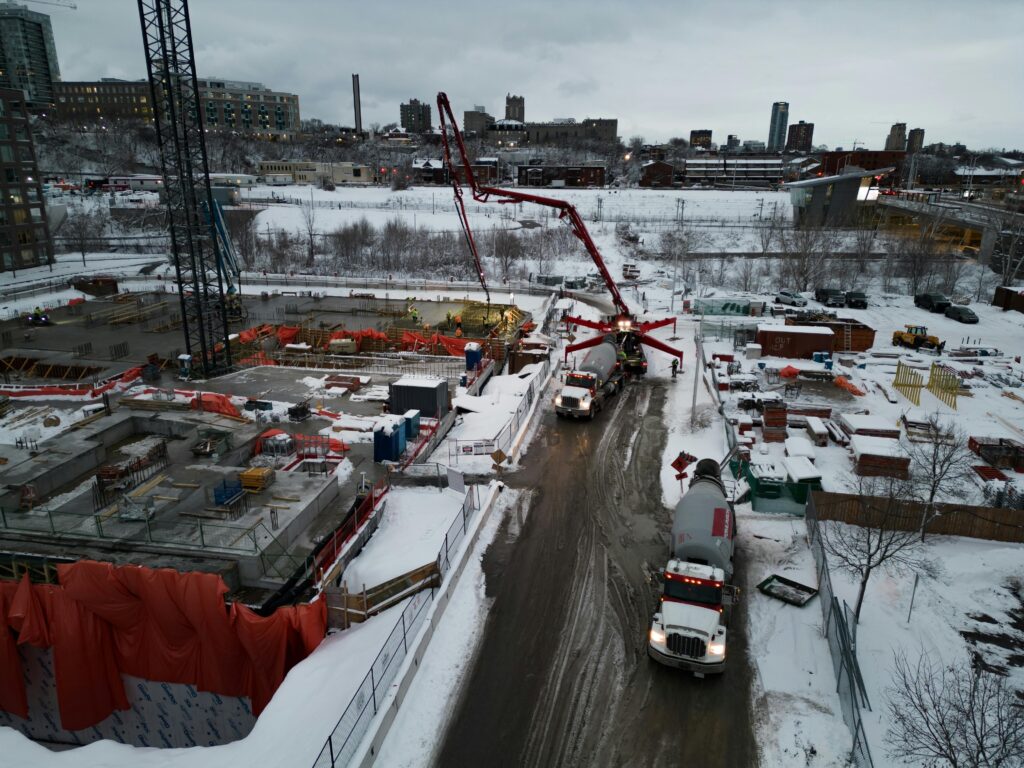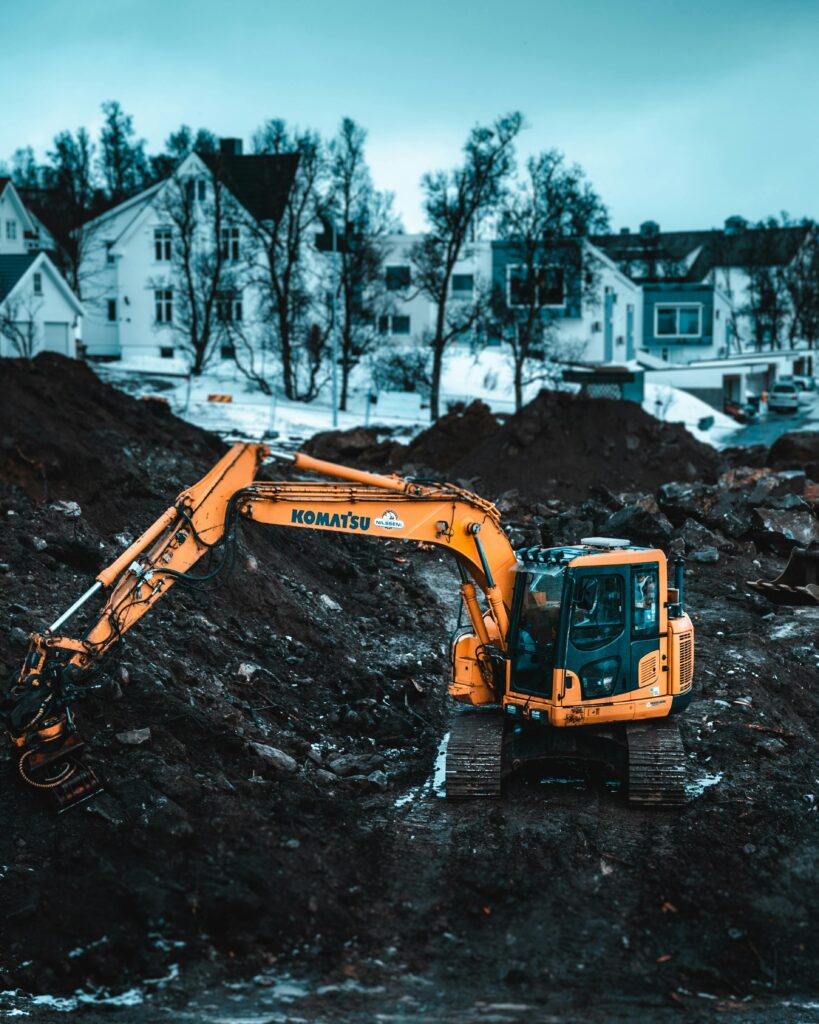A Day in the Life of Outdoor Construction
When most people think about their workday, it involves cozy offices, steaming coffee, and the warm hum of central heating. For me, my workday begins with the crunch of snow under steel-toed boots and the sharp sting of icy wind biting through layers of clothing. Construction doesn’t pause for the seasons, and today is no exception—it’s a bone-chilling -15°C, but the job needs to get done.
Layering Up: The Morning Routine
My day starts long before sunrise. The alarm rings, and for a brief moment, I lie there, listening to the wind howling outside. It would be so easy to stay in bed, but the work calls. Before heading out, I spend extra time dressing for the battlefield. It’s all about layering: thermal underwear, a thick fleece-lined hoodie, an insulated jacket, and finally, my trusty work pants and gloves. Each piece has a purpose. Each layer adds a fraction of comfort against the relentless cold.
Even with all this, there’s no escaping the chill. I feel it seeping through the gaps in my clothing, sneaking in at my wrists and ankles. My breath fogs up the scarf covering my face, freezing into tiny ice crystals that cling to the fabric. My boots, reinforced and lined, protect against frostbite, but after hours of standing on icy ground, even the best footwear can’t stop the cold from creeping in.
My gear also has to balance warmth and mobility. Too much bulk, and I can’t bend or climb effectively. Too little, and frostbite might decide to pay a visit. The hardest part? Keeping my hands warm while still being able to handle tools and materials. Gloves are essential, but even the warmest ones can’t completely shield against the cold metal tools I work with. Often, I have to sacrifice comfort for precision, pulling my gloves off for tasks that require dexterity.
The Challenges of Extreme Cold

At -15°C, everything becomes a challenge. Tools and machinery don’t work the way they’re supposed to. Metal stiffens, batteries drain faster, and equipment needs extra coaxing just to function. Frozen locks and hoses require time and patience to thaw, delaying progress and testing everyone’s nerves.
Then there’s the wind. It’s not just cold—it’s brutal. A gust at these temperatures feels like a knife slicing through fabric and flesh. It’s relentless, carrying snow that pelts against exposed skin and obscures visibility. The wind doesn’t care if you’re trying to carry a ladder or steady a beam; it pushes and pulls, adding a layer of danger to every movement.
Ice and snow present their own hazards. Scaffolding becomes slippery, ladders precarious. A misplaced step could lead to a fall, and out here, injuries aren’t just inconvenient—they’re dangerous. Even the ground itself is treacherous. The snow hides uneven surfaces, and the cold turns everything—from concrete to steel—into a potential slip hazard.
Even simple tasks like driving nails or holding screws feel like wrestling with frozen metal. Every movement is slower, more deliberate, as if the cold has seeped into your muscles, making them stiff and uncooperative. And let’s not forget the mental toll. Staying focused in the freezing cold takes effort. Your body screams for warmth, your breath freezes on contact with your scarf, and you’re counting down the hours until you can retreat to a warm vehicle or the job site trailer for a quick break.
Small Moments of Warmth
Breaks are lifelines. Every couple of hours, we retreat to a heated trailer or the cab of a truck. The warmth feels almost alien, prickling against frozen skin and stiff fingers. It’s during these breaks that the camaraderie of the crew shines through. We share thermoses of hot coffee or tea, crack jokes to lighten the mood, and swap stories about the worst winters we’ve endured. These moments remind me that I’m not alone in this. We’re all in the trenches together, facing the same battles against the elements.
Sometimes, it’s the small gestures that make the biggest difference. A coworker might lend an extra pair of hand warmers or offer to take over a particularly brutal outdoor task so someone else can warm up. These acts of kindness go a long way in making the cold bearable.
Why I Keep Showing Up
So, why do I put up with it? It’s a question I ask myself every winter morning. Part of the answer is pride. There’s something deeply satisfying about creating something tangible, something that stands tall against the elements, knowing that I played a part in its creation. Every building, every structure, tells a story of hard work, determination, and resilience.
Another part is camaraderie. The people I work with face the same conditions, and we look out for each other. Sharing tips, cracking jokes, and just knowing someone else is in the trenches with you makes the cold a little more bearable.
And then there’s the sense of accomplishment. At the end of a brutally cold day, when I finally strip off my frozen gear and collapse on the couch, there’s a unique kind of satisfaction that comes with surviving and thriving in conditions most people wouldn’t dare face.

Lessons Learned in the Cold
Over the years, I’ve learned a few tricks to make working in extreme cold a little more manageable:
- Invest in Quality Gear: Don’t skimp on boots, gloves, or thermals. It’s worth every penny.
- Stay Hydrated: Even in the cold, dehydration sneaks up on you. Warm drinks like tea or broth are lifesavers.
- Take Breaks: Rotate between outdoor work and warm-up sessions inside whenever possible.
- Listen to Your Body: If you start feeling numb or disoriented, it’s time to warm up immediately.
- Prepare Mentally: Accept that the cold is part of the job. Embrace it, and it becomes a little less overwhelming.
- Work as a Team: Lean on your coworkers. Share the workload and look out for each other.
Final Thoughts
Working in -15°C isn’t for everyone. It’s grueling, uncomfortable, and sometimes downright dangerous. But for those of us in the construction world, it’s just another day on the job.
The cold doesn’t stop us—it tests us, pushes us, and reminds us of our resilience. And when the job is done, we can look back and say, “Yeah, we built that—even in -15°C.”
If you’re reading this from the comfort of your warm home or office, take a moment to appreciate the work that goes into building the world around you. For every heated building, every sturdy bridge, every road cleared of snow, there’s a crew out there braving the elements to make it happen. And for those of us who do this work, it’s not just a job—it’s a testament to what we’re capable of, even in the harshest conditions.